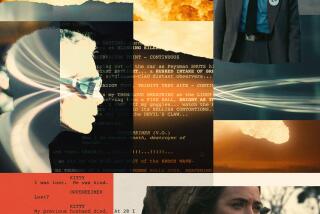Physicist Frank Oppenheimer Dies at 72
- Share via
Frank Oppenheimer, a physicist who was forced into cattle ranching during the McCarthy era and who, like his late brother, came to be a passionate advocate of nuclear disarmament, is dead.
Oppenheimer, who most recently had experienced more pleasant attention through his work with one of the nation’s most innovative science museums, died Sunday after a two-month struggle with lung cancer. He was 72.
Teamed With Brother
Frank Oppenheimer, who earned a doctorate in 1939 at Caltech, was part of the Manhattan Project at Los Alamos, N.M., where the world’s first atomic bomb was developed. The project was directed by his brother, J. Robert Oppenheimer, who died in 1967.
He went to New Mexico after establishing a national reputation for his work on the cyclotron under Ernest D. Lawrence at the University of California, Berkeley, for whom Lawrence Laboratories were named.
There Oppenheimer helped adapt the cyclotron for an experiment that proved uranium isotopes could be electromagnetically separated, a development that made a nuclear bomb possible.
Like his brother, Oppenheimer came to oppose nuclear weapons after the United States dropped atomic bombs on Hiroshima and Nagasaki.
His son, Michael, in a telephone interview with the Associated Press, quoted his father as saying, “There has got to be a better way to solve international problems.”
After World War II, Oppenheimer went to the University of Minnesota, researching cosmic rays.
In 1947 he denied a charge by the Washington Times-Herald that he had been a member of the Communist Party, but two years later recanted in testimony before the House Un-American Activities Committee.
He denied, however, that he knew of any leaks of nuclear secrets to Soviet espionage agents and said he had quit the party before going to work on the Manhattan Project.
The confession forced his resignation at Minnesota and he, his wife and two children moved to Colorado, where they became cattle ranchers.
Over the years, Oppenheimer claimed the government continued to harass him, questioning his neighbors about his activities. The neighbors evidently did not mind, for they named him head of their 13-subscriber phone company and chairman of the local soil conservation district. Soon he was teaching science at a small high school in Pagosa Springs.
As time passed, Oppenheimer resumed college teaching, accepting a position in the physics department at the University of Colorado, where he directed research into high energy particles. It was there that he first developed an interest in “hands-on” teaching, encouraging his students to build models and develop experiments illustrating the theories he was expounding.
That interest, in 1968, led to the opening of the Exploratorium in San Francisco, believed the first of the museums where visitors were encouraged to experiment and play with exhibits.
Art students went there to study light, sound and motion; children were able to play with exotic scientific toys, and such esoteric principles as resonant frequency and light refraction were made understandable with hammers and acetylene torches.
The museum, now visited by 500,000 people each year, became the prototype for similar institutions throughout the world.
Variety of Interests
An accomplished flutist, essayist and licensed pilot, Oppenheimer said that “museums need to be playful, honest, accessible and yet sophisticated environments in which people can explore their culture.”
His work there was featured in a 1982 segment of “Nova,” a Public Television System series. It was titled “Palace of Delights.”
Oppenheimer, who was born in New York City, was the author of more than 60 technical and other articles. He won awards for distinguished science and teaching from Caltech, the University of Colorado, the American Assn. of Physics Teaching and the American Assn. of Museums.
More to Read
Sign up for Essential California
The most important California stories and recommendations in your inbox every morning.
You may occasionally receive promotional content from the Los Angeles Times.












